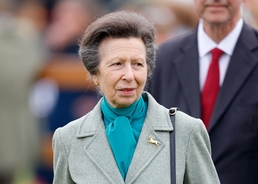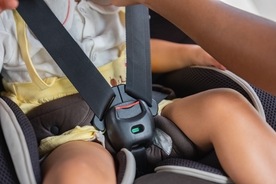Last week, Prince Philip was involved in a car crash in Norfolk. The 97-year-old duke of Edinburgh was unhurt in the incident, but two women who were also involved needed hospital treatment. They have since been discharged.
"I saw a black, 4x4 type car on its side and me and my son were like 'oh my word, that doesn't look good,'" said one woman who drove past the scene. "Luckily it was just sort of on the side of the road, the road wasn't closed in any way. Obviously it looked quite smashed in. I'm quite amazed he [the duke] is okay actually."
Because of the duke's age, many people have been arguing that he should not have been driving in the first place. This has opened up a wider discussion on the royals' driving habits - in particular, the fact that they don't wear seatbelts.

Indeed, the queen was seen driving without a seatbelt just days after her husband's accident. As it turns out, though, there is actually a pretty good reason for this.
Speaking to Hello! magazine, former royal protection officer, Simon Morgan, explained that, sometimes, it is considered safer for royals to forgo strapping themselves in when driving or riding in a car.
"There are always anomalies," Morgan said. "In the threat and risk matrix it's a matter of looking at each individual situation to decide what is the best way of achieving what needs to be achieved. For example, considering that a quick entry or exit to a vehicle is easier when people aren't strapped into seatbelts."

Sometimes, though, the seatbelt issue is one of aesthetics.
"Also, what is significant about this event or situation? Is an individual's look and appearance important? And also an individual's choice," Morgan went on. "Protection is a very unique area of policing and there are a lot grey areas, but you are always judging each situation to weigh up the risks and threats with the outcomes you are trying to achieve."
Despite their status, though, the royals are not actually exempt from the UK law which stipulates that all car users must wear their seatbelts when on the road.
The exceptions are when they are "involved in a procession organised by or on behalf of the Crown or which is commonly or customarily held", or if they are driving a car which doesn't have seatbelts. This is common amongst classic cars, which the royals are a fan of. This latter also applies to regular citizens.

Basically, then, the royals are expected to wear seatbelts most of the time, but are excused from doing so if it is considered safer for them to go without.
Prince Philip's recent accident did not have anything to do with him wearing a seatbelt or not, but, in the wake of what's happened, we hope that he takes extra special care to drive safely from now on.





